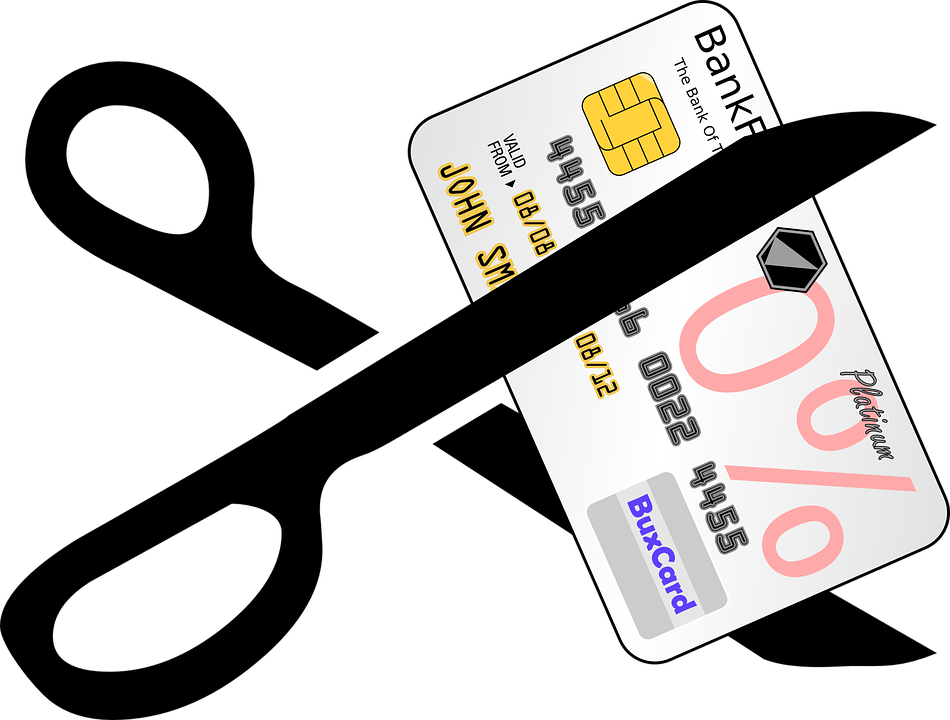NOTICE: This post references card features that have changed, expired, or are not currently available
| Sorry, this deal is no longer available. Do you want to be alerted about new deals as they’re published? Click here to subscribe to Frequent Miler's Instant Posts by email. |
|---|
Last week I excitedly revealed that Barclays’ not-yet-announced Arrival Premier card would offer transferable miles. In my opinion, transferable points rewards are the best form of rewards. And having a new option for earning transferable points is great. No question.
Since I published that, Doctor of Credit has revealed more about the card. He somehow got his hands on a complete screenshot of Barclays’ (presumably beta) website for the new card (DoC published the screenshot here). Most of the details on that page were already known, but we didn’t previously know the earning rate for the card. The screen shot, though, makes clear that the card will earn 2 Arrival miles per dollar for all purchases (just like the Arrival Plus).
When you consider what we already knew: that the card will offer a big spend bonus every year (Spend $15,000, get 15,000 bonus Arrival miles; plus spend an additional $10,000, get a total of 25,000 bonus Arrival miles) one realizes that it is possible to earn 3 Arrival miles per dollar on all spend by spending exactly $15,000 or $25,000 per cardmembership year.
While we don’t know which transfer partners Barclays will support, 3X for all spend is outrageously good for a transferable points program. Heck, uncapped 2X for all spend is incredible. Only the Amex Blue Business Plus offers 2X transferable points for all spend, but that one is capped at $50K spend per year.
But, hold on… There is a scenario where 2X to 3X is not that exciting…
What if the transfers are worse than 1 to 1?
Amex, Chase, and Citibank’s transferable points programs offer 1 to 1 transfers to various airline programs (and sometimes better than one to one when there’s a transfer bonus or for transfers to certain hotel programs). SPG is even better because they give you a 5,000 mile bonus when you transfer 20,000 points.
Many of us have assumed that Barclays would also offer 1 to 1 transfers, but what if they won’t?
The screenshot that Doctor of Credit posted shows the following info about transferring Arrival miles to loyalty programs:
Transfer your miles
to participating travel loyalty programs6
Then the fine print states:
6 Miles Transfer: Miles required for miles transfer redemptions vary, depending on what you are redeeming for. The selection of miles transfer partners are subject to availability and the number of miles needed to redeem may change at any time. You may only transfer miles if you are a primary cardmember and only to a participating travel loyalty program account belonging to you.
And, separately:
– Can you explain the miles transfer program?
You can transfer your miles to participating travel loyatly programs. Miles required for miles transfer redemptions vary depending on what you are redeeming for. The selection of miles transfer partners are subject to availability and the number of miles needed to redeem them may change at any time. You may only transfer miles if you are a primary cardmember and only to a participating travel loyalty program account belonging to you.
Think about the sentence “Miles required for miles transfer redemptions vary, depending on what you are redeeming for.” Since Barclays refers to their own points as miles, this can logically be interpreted in a couple of ways:
- Airline miles or hotel points required for an award vary depending upon what you are redeeming for; or
- The number of Barclays “miles” required to get a fixed number of airline or hotel points depends on which program you are transferring to.
The first is unquestionably a true statement, but I’m not sure it is what Barclays meant. The second interpretation suggests that transfer ratios may vary. That wouldn’t be surprising. After all, most transferable points programs offer different transfer ratios for different transfers. While Amex and Citi offer 1 to 1 transfers to most airline programs, Amex transfers 1,000 points to 2,000 to Hilton points, and Citi transfers 1,000 points to 800 JetBlue miles (or to 500 JetBlue miles with the Citi Preferred card), just to give two examples of transfers that aren’t one to one.
As an aside, you can find details about transfer partners for all four current transferable points programs on these pages: Amex Transfer Partners, Chase Transfer Partners, Citi Transfer Partners, SPG Transfer Partners, Transfer Partner Master List.
The issue is that it’s possible that 1 to 1 transfers won’t be the norm for Barclays. I wouldn’t be particularly surprised to find that Barclays transfers 2 to 1 to to most airline programs while transfers to hotel programs may be better.
Why do I think this? I’m not sure that 2X everywhere, uncapped, will be sustainable. Unless Barclays has negotiated great deals with each transfer partner, each transfer may cost them more than a penny per point. Let’s say the typical transfer costs Barclays 1.5 cents per point (just making up numbers here)… In that case, the base 2X earning rate on the card will cost Barclays 3 cents per dollar for Arrival miles transferred to miles. That will hurt.
If Barclays’ typical transfer rate will be 2 to 1, then the base 2X earning rate of this card will be just 1 airline mile per dollar. That would be awful. The theoretical 3X earning rate (at $15K or $25K spend per year) would be better: 1.5 miles per dollar. But if that rate attracts you, you’ll be better off with the Chase Freedom Unlimited which earns 1.5X on all spend combined with a premium Chase card to make the points transferable to miles.
My source adds more info about transfer partners
Hopefully I’m wrong about all of that 2 to 1 transfer ratio nonsense, above. If so, you might be interested to hear that my source who had told me that there would be “at least a half-dozen airline transfer partners,” has added a key detail: there will be at least a half-dozen transfer partners which are not currently co-brand partners with Barclays. This means that there will be at least six transfer partners other than American Airlines, Frontier Airlines, Hawaiian Airlines, JetBlue,
Lufthansa, Choice Privileges, Wyndham, etc. To be clear, we don’t know which, if any, of Barclays’ co-brand partners will be transfer partners, but we now know that there will be six partners that are not on that list.
By looking at the programs that are available to multiple other transfer partners, we can guess that the following airlines may be transfer partners with Barclays Premier:
- Each of these are currently transfer partners with all four program (SPG, Amex Membership Rewards, Chase Ultimate Rewards, and Citi ThankYou Rewards):
- Air France
- Singapore Airlines
- Virgin Atlantic
- And these are currently transfer partners with three out of four:
- British Airways
- Cathay Pacific
- Etihad Airways
While I doubt I exactly nailed the 6 transfer partners, I’ll be very surprised if we don’t at least see 3 or 4 of the above. And the good news is that each of these have very good uses for certain types of awards.
So, here’s to hoping that I’m wrong about the transfer ratios, but right about the transfer partners. We shouldn’t have to wait long to find out. Doctor of Credit reports that the card will be launched this month.





[…] Arrival Premier Card […]
[…] anticipated Barclays Arrival Premier card. Greg was right that transfer ratios are not 1:1 (See: More about Arrival Premier transfer partners (from my source), and why the card might not be all tha…), but it’s still not necessarily bad. There is no signup bonus and the transfer partners are […]
Greg,
I’m tired of these “sources” and parsing out incomplete info. You do a disservice yammering about these cards without full info. Either name the so-called “sources” or tell them (likely PR flacks) to STFU until there’s an official release. They aren’t going to gain any excitement with a lame card (we have enough of them already).
It actually also says: Redeeming miles for travel statement credits offers the best value. So prepare for the worse..
So, it is 2X on unlimited spend and really 3X on $25,000 spend?
Cap 1 already offers 2x uncapped, lower fee (credited back to some even). So, everyone must deduct the $150 annual fee from their potential 3x once they reach the annual spend level and THEN see if its really a 3x card for their amount of annual spend. Why some aren’t figuring that and writing about it is strange. With no initial bonus offered by Barclays on this it leaves me wondering if they are pushing affiliate bonuses to certain writers to get them to talk about this or maybe there’s not much to talk about anymore for travel writers. No criticism meant for this blog, but just makes me wonder. Dead on Arrival.
Cap 1’s points are worth a penny each and can’t be transferred to any outside rewards programs. The possibility of transferring to those programs is where this card will be made or broken as far as it’s ability to deliver value goes… but if, for instance, one were to spend 25k on the card and get the bonus 25,000 points. and then redeem them for a penny each for travel that would result in $250 worth of travel for a $150 fee. net gain of $195 over the Venture.
I’m talking about the Venture in which that, which I have is 2 pennies not 1. Maybe you’re thinking of their base card. My spending of $20000 = $400 in travel redemption credit which I’ve found very versatile since I can use it on airlines which have no reward program, for instance some South Pacific island to island flights. I can also use it to get reimbursed for many othet travel related expenses for which Barclays denied me. And, they’ve usually given me a bonus to offset the lower annual fee. And, they gave me a decent initial spending bonus. So, I’m puzzled who Batclays is trying to market this new card to (maybe those who haven’t yet gotten into travel rewards and not as aware of options?
Venture is flexible and that does have some value. The miles value is fixed at a penny a piece though. 2 miles earned per dollar spent.
Just as an, as yet completely fictional, example. If you were able to transfer at 1:1 to AAdvantage and wanted to use the miles to fly first class From Chicago to Hong Kong on Feb 6th 2019. you could get a one way ticket for 110,000 AA miles or you could purchase the ticket for $11,441. One way to value those redeemed miles would be at 10.4 pennies a piece. 31.2 pennies per dollar under the bonus or 20.8 pennies without it. To get the same flight with the non fictional venture card you would need to spend 1,144,100 Venture miles.
I do believe cards like Venture have their place. but there is potentially a lot of value in transferable points when you use them stratigically.
Additionally, because of the bonus(es). This card has the potential to beat out the Venture on strictly cash redemptions on a year in year out basis.
Taking your specific case of spending 20,000.
On Venture:
$20,000 spend in a year nets 40,000 points worth $400 – $95 fee = $305 gained
(2 “miles” per dollar spent + no bonus)
On Arrival Premier:
$20,000 spend in a year nets 55,000 points worth $550 – $150 fee = $400 gained
(2 “miles” per dollar spent + 15,000 points bonus for spending $15,000)
I actually did receive a nice bonus on the Venture. First bonus was when they launched and would match your flying program miles up to 100,000 points therefore I received $1000 + 2 x spend no cap. My wife did the same and therefore within a few months we had $2000 for travel and was able to rent a villa for free in the Caribbean and Venture credited in full. After a while they dropped the bonus to 50,000 points ($500) and then recently to $400. But, they credited my annual fee this year, so $ for $ Venture is way ahead for ME than if I were to get this new proposed card if it’s truly going to come out with no initial spend bonus. If Barclays changes that in the future when they see not enough interest only then might my family consider applying.
As mec said, Cap 1’s points are worth a penny each, even with the Venture card. The Venture card earns 2 points per dollar, so it earns the equivalent of 2 cents per dollar, or 2% back. Cap 1 calls their points “miles” but they are not real airline miles. With real airline miles it is sometimes possible to get far more than 1 cent per point value. With Cap 1 it is impossible to get more than 1 cent per point value (2 cents per dollar spent). I’m not saying that the Cap 1 points are bad — just that for those who like to find the best award travel deals you can’t get outsized value.
We use our Venture for airlines in which there are no ‘conversions’ for and just buy the ticket, which gets credited (if the ticket is $400 and we spent 20,000 on the Venture we get the ticket cost back, so we always redeem at the 2x rate). Then, I use other cards which give me better conversion rates for the big airlines that have programs. This is how we travel to the South Pacific for free (ALL airfare, hotels, food and even some excursions). It all depends on logistics and what cards you have to use and for individual purposes. So far, Cap 1 Venture has treated us better than Barclays, which has gotten more constrictive over the years in what they’ll let you redeem their points for. This new card seems to get some attention from just those looking to convert to the big airlines. But, no initial bonus is the killer for this card, if rumors are true. Will pass on it unless something changes.
Sam: I’m not sure what you’re asking here? 2X is unlimited plus you get a 25K bonus with $25K spend, so that makes it equivalent to 3X when you spend only $25K per year.
BA is very unlikely. If you excuse SPG (technically a hotel program), they are transfer partners of the two credit card partners (Amex offered outside the US).
Thank you for the update. I’m watching this one with increasing interest. 3x on everything seems too good to be true, and I think many folks could but put $25K spend on a card during a year. That’s actually not that much when compared to the “kicker” perks of other cards. This could turnout to be a game changer if the transfer ratios turnout to be 1:1.